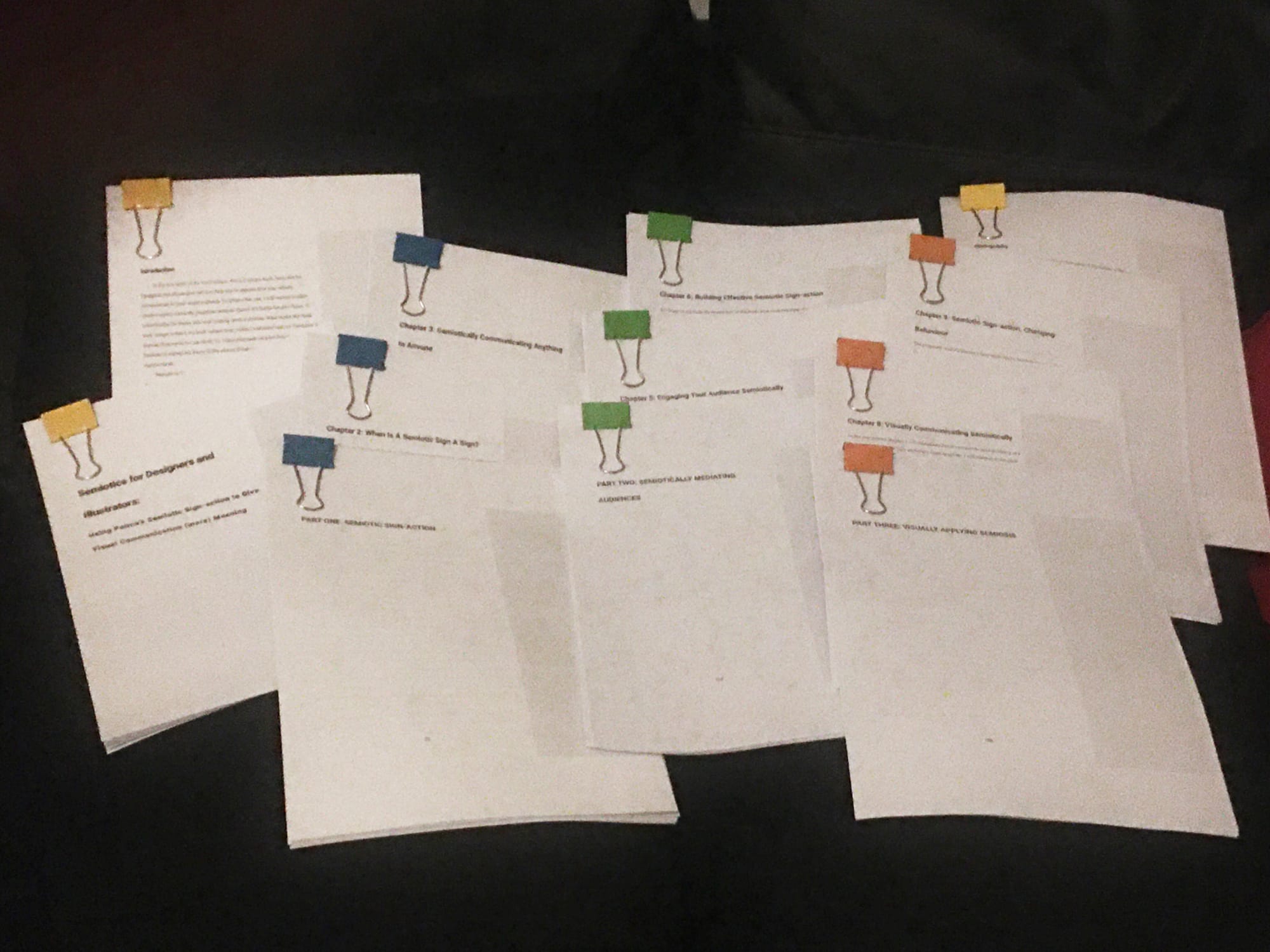005: My writing process… the final draft
First raw and chaotic draft


Semiotics for Designers and Illustrators (2026)
Between January and April 2025 I turned to the final draft of my book manuscript contextualising the pragmatic semiotic theory of Charles Sanders Peirce for designers and illustrators. My original intention for this newsletter was to write in lock-step with writing each chapter. As I had already ‘written’ chapter 4 as a sample chapter I did consider publishing each chapter draft on Semiosis 101’s Semiotic Resource for subscribers to act as peer reviewers.
In this vein, the first two newsletter posts happened in July 2024 but then nothing until May 2025. In newsletters 004 and 005 I described how I wrote the first draft in between directing and teaching a BDes(Hons) Graphic Design degree at DJCAD. [1] This workload left me no real time to write and post a chapter, as I had to balance other duties and responsibilities. Also, having already ‘written’ chapter 4 I hadn’t revisited the text during writing the first draft of the other eight chapters.
I had written the first three chapters, then I skipped chapter 4 to write the remaining 5 chapters, hoping they would all flow. At the draft 2 stage it was clear they wouldn’t. It became clear that in chapters 1-3 I had already covered some of sample chapter 4’s points. Therefore, to restructure chapter 4 I had to review the whole 9 chapters, which was beneficial as I discovered potential oversights I had made in the 1st draft.
To my horror I also found that chapters 7 and 8 essentially re-summarised chapters 5 and 6. Chapters 7 and 8 should have been focussing on ways to apply Semiosis into existing illustration and design process. The moral of this tale is just because you hit your chapter word limits doesn’t mean you have a coherent chapter. With these discoveries I set about ensuring that the 2nd draft actually said what I wanted it to say. In future newsletter posts I’ll put a spotlight on how I wrote each chapter.
What was beneficial in redrafting the chapters and case studies I could monitor where and when I introduced key Peircean theory. In that way, I had the opportunity to ensure that later chapters dealing with the application of Semiosis and methodologies had a solid theoretical ground. The 9 chapters were grouped into 3 parts, 3 chapters to a part.
As chapter 4 began the middle part of the book, its rewriting was much easier. The sample content which I had reconfigured into the first three chapters afforded me the chance to use that free word count in a more strategic way. In a similar way, restructuring chapters 7 and 8 to refocus on the application of Semiosis helped the last part of the book to find its authentic voice.
What did I do with the superfluous text I edited out of thee manuscript’s 2nd draft? Well, none of it was wasted as I used the text in various blog posts. So, if you go to the 5-min Reads tab on Semiosis 101’ Semiotic Resource you’ll be able to read a new post, published every Friday at midday (GMT).
1 Duncan of Jordanstone College of Art and Design (DJCAD), University of Dundee, Scotland.
If you want to be amongst the first to read my book in 2026 I will be posting some exclusive Bloomsbury discount codes in this newsletter nearer publication date.



